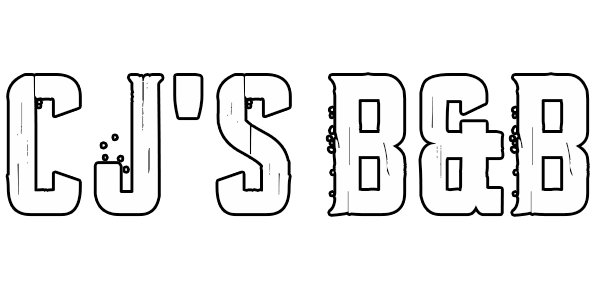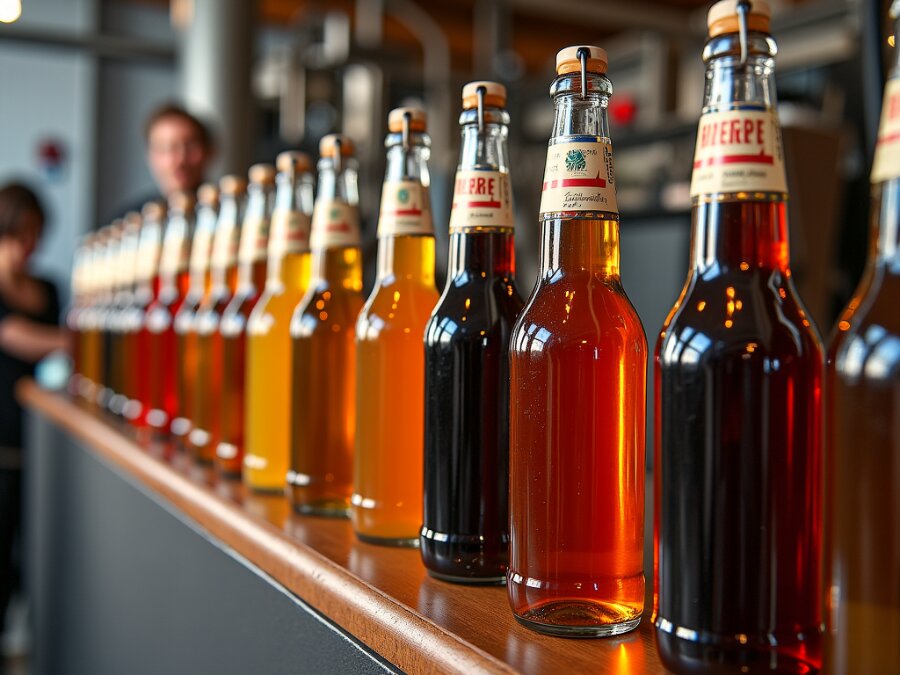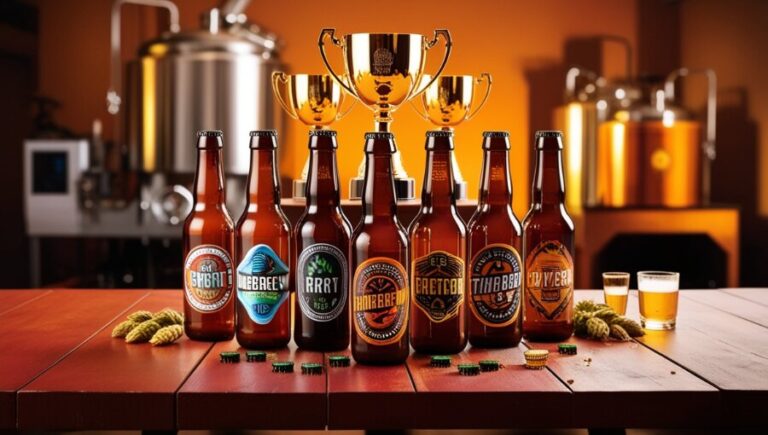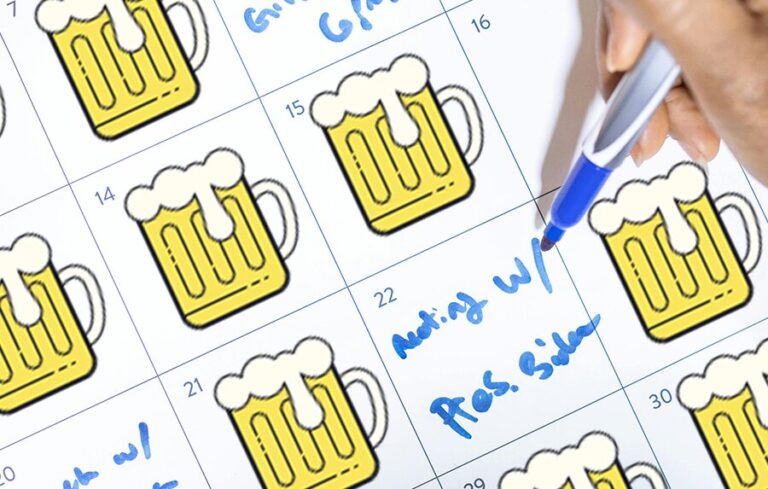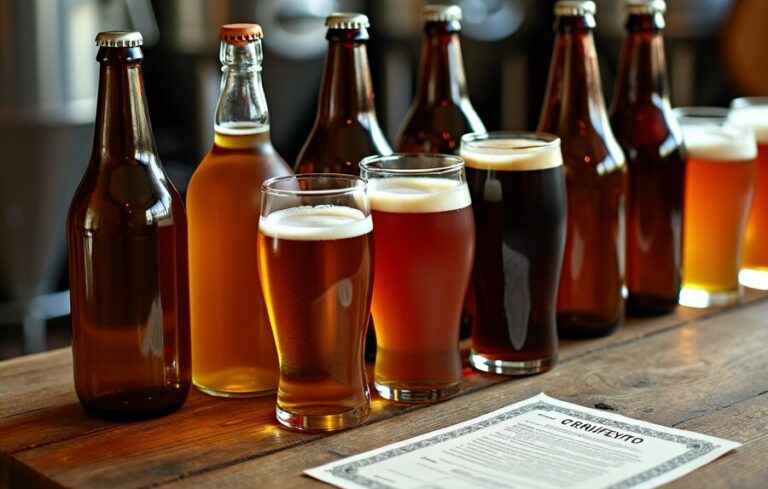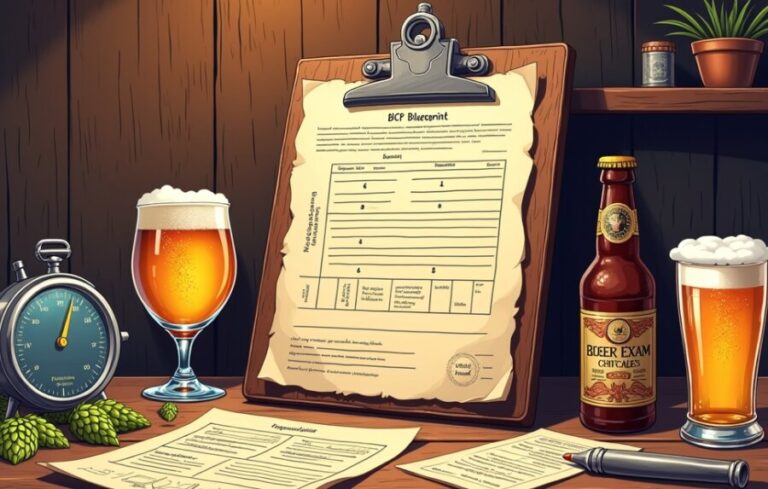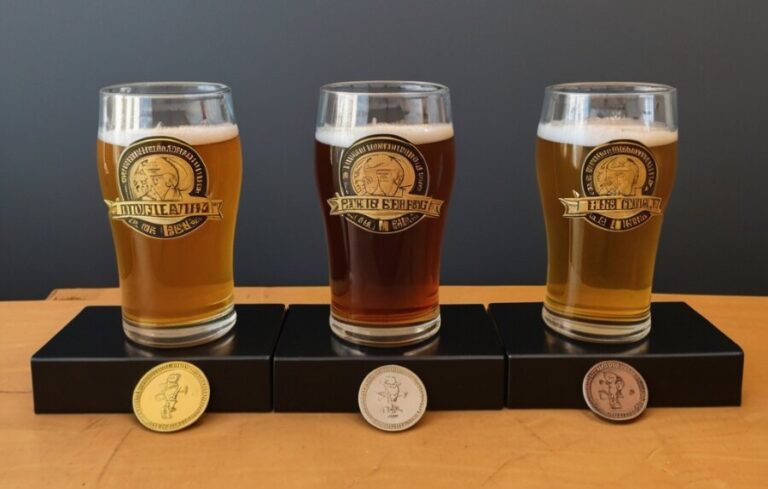Our evaluations and product assessments are conducted using a thorough and unbiased approach. Should you choose to buy any items through our provided links, we might receive a commission Read our disclosures.
Cracking the Code of Homebrew Competitions
Jumping into homebrew competitions can be a wild ride, especially when you get the hang of the homebrew competition categories, styles, and judging criteria that can make or break your brew’s success.
Categories and Styles
Homebrew competitions are like a big party with different rooms, each dedicated to a specific beer style. You’ve got your IPAs, stouts, lagers, and a bunch more. Competitions usually fall into two camps: Professional and Amateur. Amateur ones often stick to the Beer Judge Certification Program (BJCP) style guidelines, which is like the Bible for beer nerds (Back to School Brewing).
In these competitions, beers are grouped into flights. Think of flights as mini-tournaments within the big event. You might have an IPA flight, an American Dark Beers flight, and so on. Judges, ideally with at least one BJCP-certified judge per pair, taste and rate the entries. High-ABV flights get judged first thing in the morning, while low-ABV ones are saved for later so judges can still drive home (American Homebrewers Association).
| Common Homebrew Categories | Description |
|---|---|
| IPAs | India Pale Ales known for their hoppy punch |
| Stouts | Dark beers with rich, roasted vibes |
| Lagers | Crisp, clean beers brewed at cooler temps |
| Sours | Beers with a tart or sour kick |
Judging Criteria
Knowing what judges are looking for is like having the cheat codes. Each beer gets judged on appearance, aroma, flavour, mouthfeel, and overall impression. They’re checking if your brew sticks to the style guidelines and how well it nails its category.
- Appearance: Color, clarity, and how well the head sticks around.
- Aroma: The nose knows—judges sniff for hops, malt, and any funky smells.
- Flavour: This is the big one. Judges look for a balance of sweetness, bitterness, and any special flavours.
- Mouthfeel: How the beer feels in your mouth—body, carbonation, and smoothness.
- Overall Impression: The gut feeling about the beer’s quality and drinkability.
For more tips on prepping for competitions, check out our homebrew competition tips. Getting a grip on these categories and judging criteria can seriously up your game. And if you’re itching to enter a competition, peek at the homebrew competition calendar to find one near you.
Entering a Homebrew Competition
Jumping into a homebrew competition is a thrilling way to show off your brewing chops and get some solid feedback. To make sure your brew shines, you gotta prep right and know the rules.
Getting Your Brew Ready
Before you send off your beer, think about the different homebrew competition categories like IPAs, stouts, and lagers. Each one has its own set of rules. Make sure you check out the Beer Judge Certification Program (BJCP) style guidelines so your beer gets judged fairly (HomeBrewTalk).
Here’s a handy checklist to get you started:
| Preparation Steps | Details |
|---|---|
| Pick the Right Category | Match your beer to the right category. |
| Check BJCP Guidelines | Know the judging criteria for your category. |
| Quality Check | Taste your beer a few times to make sure it’s competition-ready. |
| Proper Packaging | Use clean bottles and fill them right to avoid oxidation. |
| Clear Labels | Put all the needed info on the label, like your name, beer style, and any special notes. |
Submission Rules
Knowing the submission rules is key to getting your entry in. Different competitions have different rules, but here are some common things to keep in mind:
- Registration: Sign up for the homebrew competition before the deadline.
- Deadlines: Keep an eye on the homebrew competition deadlines so you don’t miss out.
- Number of Entries: Some competitions let you enter multiple beers per category, others just one.
- Shipping: If you can’t drop off your beer in person, check the shipping rules. Pack your beer well to avoid breakage.
- Fees: Most competitions charge an entry fee. Make sure you pay up when you register.
By sticking to these rules and prepping your entry right, you can boost your chances of winning. For more tips and tricks, check out some homebrew competition tips to fine-tune your game plan.
Feedback and Improvement
Joining homebrew competitions is a wild ride, but it’s also a golden chance to level up your brewing game. After entering, I always zero in on the feedback from judges to boost my skills.
Evaluating Scoresheets
Judges score entries on a 50-point scale, breaking it down into aroma, appearance, flavour, mouthfeel, and overall impression. I dig into the scoresheets to spot what I nailed and what needs work.
| Evaluation Category | Points Available |
|---|---|
| Aroma | 0-12 |
| Appearance | 0-3 |
| Flavour | 0-20 |
| Mouthfeel | 0-5 |
| Overall Impression | 0-10 |
Judges try to keep their scores within 7 points of each other, though their point spread might vary. The written comments are gold—they show where my beer shined and where it flopped. For example, I might learn about the impact of specialty malt, mashing temps, fermentation, or yeast health. This feedback is a jackpot of tips to fine-tune my brewing (American Homebrewers Association).
Implementing Feedback
After going through the scoresheets, I make it a mission to act on the feedback. Judges often point out off-flavours like oxidation and suggest comparing my brew to commercial examples for clarity.
By tackling these suggestions, I can seriously up my game. For instance, if the feedback says my beer lacks aroma depth, I might play around with different hops or tweak the fermentation process.
Once I’ve made changes, I jump back into more competitions. This helps me track my progress and gather more feedback. Continuous learning and tweaking are key, and each competition gets me closer to brewing perfection.
For anyone looking for tips, check out homebrew competition tips and keep an eye on homebrew competition deadlines to stay on track. Embracing feedback is crucial, and with some dedication, the next competition could be your big win!

Throwing a Homebrew Bash
Throwing a homebrew competition is like hosting a big party with a twist. It’s a mix of excitement and a bit of chaos, but with the right game plan, it can be a blast. Here’s how I roll when setting up one of these shindigs.
Getting Your Ducks in a Row
First things first, you need a spot. Think of a place with plenty of room and some cold storage for all those brews. Breweries are a no-brainer since they usually have what you need, but other places can work too.
Here’s what I look for:
| What You Need | Why You Need It |
|---|---|
| Space | Enough room for judges and all the entries. |
| Cold Storage | Keep those beers chilled and ready. |
| Entry Handling | Can they handle shipped or dropped-off entries? |
| Extras | Food and drinks for everyone involved. |
Timing is everything. Start planning 8-12 months ahead to lock in your venue and get your team together. Kick up your marketing 3-4 months before the event to get those local brewers excited.
Who Does What
A solid team makes all the difference. Here’s the lowdown on who does what:
| Who | What They Do |
|---|---|
| Organizer | Runs the show, handles logistics, and makes sure everything gets done. |
| Judges | Taste the entries, give feedback, and score them. |
| Stewards | Help the judges by pouring beers and keeping things organized. |
Everyone needs to stick to their roles. Judges shouldn’t be pouring their own beers—it messes with their ability to judge fairly.
By nailing down the planning, logistics, and roles, you can throw a homebrew competition that’s fun for everyone. For more tips, check out our homebrew competition tips. And if you’re looking for upcoming events, peek at the homebrew competition calendar for local happenings.
Judging Process
In any homebrew competition, getting a grip on the judging process is crucial for both participants and organizers. This section breaks down how flights are grouped and how scoring and evaluation work during these events.
Flight Groupings
Homebrew competitions sort entries into flights based on styles like IPAs, dark beers, sours, and more. Judges are assigned to specific flights to keep things organized and fair (American Homebrewers Association).
| Flight Category | Examples |
|---|---|
| IPAs | American IPA, New England IPA |
| Dark Beers | Stouts, Porters |
| Sours | Berliner Weisse, Gose |
| Specialty | Fruit Beers, Spiced Beers |
Each flight includes beers with similar traits, making it easier for judges to compare them side by side.
Scoring and Evaluation
Judges look at five main categories: Aroma, Appearance, Flavour, Mouthfeel, and Overall Impression. They use the BJCP (Beer Judge Certification Program) guidelines to score and comment on each entry. Typically, judging is done in pairs, with at least two judges per beer.
| Evaluation Category | Description |
|---|---|
| Aroma | The beer’s scent, including hops, malt, and other ingredients. |
| Appearance | Visual aspects like color, clarity, and head retention. |
| Flavour | The taste profile, including balance and complexity. |
| Mouthfeel | The beer’s texture and body, such as carbonation and creaminess. |
| Overall Impression | The judge’s overall take on the beer’s quality and drinkability. |
Judges fill out scoresheets based on their evaluations. Stewards then collect these sheets, transport entries from the cellar to the judging table, complete the Flight Summary Sheet, and deliver everything to the Data Entry person.
This method ensures fairness and consistency, helping participants see where they can improve. For more tips on acing competitions, check out our guide on homebrew competition tips.
Climbing the Ranks in Homebrew Competitions
So, you’ve dipped your toes into the world of homebrew competitions and now you’re itching to climb the ranks. Let’s break down two key areas: the Best of Show selection and nailing your recipe.
Best of Show Selection
The Best of Show (BOS) is the crown jewel of any homebrew competition. After the initial scoring, beers in each category or flight get ranked. The top beers then face off in a “Mini-Best-of-Show” round. Here, a panel of senior judges samples the winners from each category to pick the overall Best of Show Beer.
To give your beer a fighting chance, you need to grasp the mini-BOS process. Up to three beers from each flight can advance. A panel of top judges then picks the three beers that best represent their style, awarding first through third places. If your beer is still in the bottle from the initial judging, it can be used for the mini-BOS, but make sure to recap it immediately after pouring. Sometimes, a fresh taste is needed, so sending three bottles initially can be a smart move (BJCP).
| Mini-Best-of-Show Process | Details |
|---|---|
| Number of Entries Advancing | Up to 3 per flight |
| Panel Composition | Top 2-3 judges from each flight |
| Final Tasting | Judges sample the winner from each category |
Recipe Formulation
Crafting a winning recipe is like cooking up a storm in the kitchen. Judges have a keen eye (and nose) for specific traits in each style, so your recipe needs to shine. Focus on aroma and carbonation levels to make your beer unforgettable (Brew Your Own).
When I’m whipping up a recipe, here’s what I keep in mind:
- Style Guidelines: Know the category you’re entering and make sure your beer fits the bill.
- Ingredient Quality: High-quality ingredients can make your brew sing.
- Aroma and Flavour: Unique aromas can make your beer stand out.
- Carbonation Levels: Get the carbonation right to enhance the drinking experience.
By paying attention to these details, you can brew a beer that not only meets but exceeds the judges’ expectations. For more tips and tricks, check out the homebrew competition rules and homebrew competition tips.

